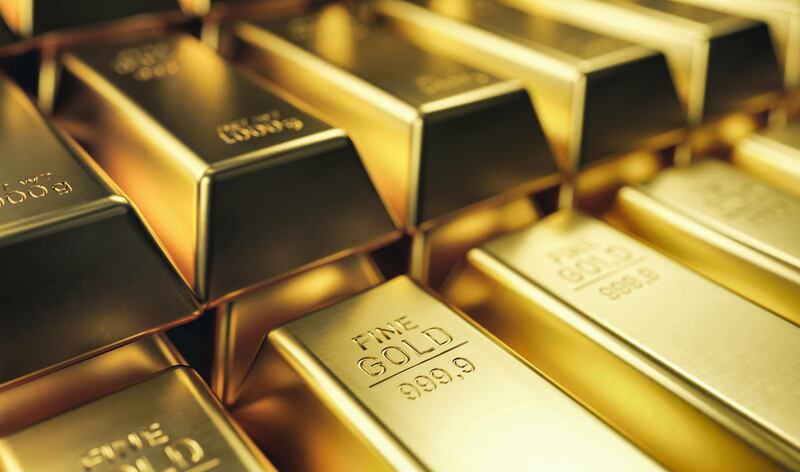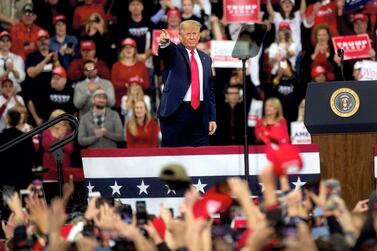While Western investors revelled in the festive season, the price of gold made a decisive breakout from the trading range that stopped its summer advance.
This should mean an early resumption of the bull market for the yellow metal in new year, albeit not necessarily in a straight line.
Remember how the gold price made a similar breakout in May when prices soared over the summer? That was one of my best calls for 2019.
From December 23 to 26, gold leapt past the $1,500 an ounce post, and silver prices jumped three times faster to $18 an ounce. The popular junior miner exchange-traded funds, GDXJ for gold and SILJ for silver, were up by 7 and 12 per cent, respectively. Gold firmed again to $1,510 on Friday.
And this at the end of the year, when most precious metals' analysts expect a bit of profit and tax loss-taking. Instead, those shorting the precious metals were forced to cover their positions, adding to the upward price impetus.
That is a nice way to almost close a standout year for precious metals – the best since 2010 – with gold up 18 per cent and silver 16 per cent, albeit trailing the S&P 500 Index up 29 per cent (though do not forget it was down 19.8 per cent last December).
Beneath the surface there are so many good reasons to hold gold and silver for 2020 that perhaps this jump should not have come as such a surprise.
First, an increasing band of economists and forecasters are hailing a top in the US dollar. Three Federal Reserve rate cuts in 2019 were hardly supportive of the greenback, and it is clear enough that any stock market weakness on Wall Street will be met with further cuts. Gold and the dollar usually move in opposite directions.
Second, precious metals offer value in a world full of overpriced assets. Gold is still around 20 per cent off its 2011 high, silver is worth less than a third of the price it reached that year.
Thirdly, the classic investment adviser approach to asset management is diversification. With US stocks at a record in terms of their total market capitalisation compared to gross domestic product – Warren Buffett’s favourite overvaluation yardstick – there has never been a better time to diversify.
Fourth, while physical gold and silver prices corrected by 10 to 15 per cent from the start of September after their summer surge, the price of shares of precious metal producers did not show as much weakness. This is the opposite of what should happen and therefore a bullish indicator.
Fifth, a whole host of very solid economic indicators point to a slowing global economy. Global car sales this year are expected to drop by 3.1 million, the biggest crash since 2008, and the International Energy Agency says 2019 growth in oil demand will be the lowest in three years. This makes gold a safe haven.
Sixth, a barely reported crisis in the global credit refinancing, or repo market, this month has caused a massive increase in credit from the Fed to avoid the sort of stock market crash we saw in December 2018. This is comparable to the credit surge at the New Year of 2000 that some say tripped the dot-com crash, and started the 2000s gold bull market.
Seventh, gold’s main speculative rival of recent years, the cryptocurrencies, have lost a lot of credibility.
So how do readers actually go about investing in what could be the bonanza of 2020?
Gold booms go in several phases. Typically in the first phase, gold outperforms silver, and that happened last summer. In the next leg up silver outperforms gold by two-to-three times, although this can be a very volatile performance.
The lesson therefore would be to consider spreading your risk and adding some silver in your asset allocation. If you are an online brokerage investor then low-cost ETFs for the metals include BAR for gold, and Sprott Physical Silver Trust (PSLV).
Then you should weigh up whether you are prepared to accept the added risk and volatility for what should be the higher gains in the shares of precious metal producers. Their profits rise quicker than the price of the metals they produce.
After many bad experiences, I am reluctant to name specific stocks. What seems to work better for most people is to spread the risk by buying a basket of 25 to 30 of these shares held in an ETF.
Then if one company’s mine turns out to be a dud or the management incompetent, it does not affect your overall investment much. For large gold companies, the GDX is the industry standard ETF and GDXJ for smaller companies that tend to come back into fashion near the top of the market; and SILJ is the silver mining junior ETF.
Peter Cooper has been writing about Gulf finance for two decades







